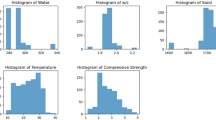Abstract
The study of scrap melting provides data for increasing the scrap utilization rate. Here, an evaluation model is established to analyze the effect of each factor on scrap melting using statistical methods for the first time. Subsequently, the quantitative relationship between the influencing factors and melting parameters is obtained. Back propagation (BP) neural networks and multiple regression are used for predictions. For scrap melting controlled by carbon mass transfer when the bath temperature range is 1573–1723 K, the relative contribution of each parameter was mixing power > bath temperature > specific surface area > carbon content. The predicted values of the BP neural network are more accurate than those of multiple regression. The relative errors of average melting rate, average mass melting speed, and mass transfer coefficient of training sets are 14.02%, 13.95%, and 7.19%, respectively, which decrease by 22.71%, 47.22%, and 69.46%, respectively, compared with those of the regression equations after outliers are removed.


Similar content being viewed by others
References
F.M. Penz and J. Schenk, Steel Res. Int. 90, 1900124. (2019).
E.M. Gol’dfarb and B.I. Sherstov, J. Eng. Phys. 18, 342. (1970).
F.M. Penz, J. Schenk, R. Ammer, K. Pastucha, and B. Maunz, Metall. Ital. 11, 36. (2018).
A.K. Shukla, B. Deo, and D.G.C. Robertson, Metall. Mater. Trans. B 44, 1407. (2013).
F.M. Penz, R.P. Tavares, and C. Weiss, Int. J. Heat Mass Trans. 138, 640. (2019).
F.M. Penz, J. Schenk, and R. Ammer, Processess 7, 186. (2019).
J. Li and N. Provatas, Metall. Mater. Trans. B 39, 268. (2008).
H. Sun, Y. Liu, and C. Lin, Int. Congr. Sci. Technol. Steelmak. (2015).
M. Gao, S.F. Yang, and Y.L. Zhang, Ironmak. Steelmak. https://doi.org/10.1080/03019233.2019.1659003 (2019).
M. Gao, J.T. Gao, Y.L. Zhang, and S.F. Yang, JOM. https://doi.org/10.1007/s11837-020-04088-6 (2020).
J.K. Wright, Metall. Trans. B 20, 363. (1989).
Y.U. Kim and R. Pehlke, Metall. Trans. 5, 2527. (1974).
H. Gaye, M. Wanin, P. Gugliermina, and P. Schittly, Rev. Metall. 82, 793. (1986).
R.G. Olsson, V. Koump, and T.F. Perzak, Trans. Metall. Soc. AlME 263, 423. (1966).
S.L. Wu, M.Y. Kou, and J. Sun, Steel Res. Int. 85, 1552. (2014).
A. Chaudhurya, R. Khatirkara, and N.N. Viswanathana, J. Magn. Magn. Mater. 313, 21. (2007).
S.Y. Zhang, Y.P. Bao, and C.J. Zhang, Chin. J. Eng. 39, 511. (2017).
E. Sandberg, B. Lennox, and P. Undvall, Control Eng. Pract. 15, 1063. (2007).
D.L. Mon, C.H. Cheng, and J.C. Lin, Fuzzy Set. Syst. 62, 127. (1994).
C.C. Hung and L.H. Chen, Lect. Notes Eng. Comp. Sci. 2174, (2009).
Y.S. Liu, J.P. Gao, and J.B. Zhang, J. Iron Steel Res. 2, 1. (1990).
Sasmita and J. Sahoo, Hydrogeol. J. 21, 1865. (2013).
C.C. Hsu, J. Lin, and C.K. Chao, Comp. Methods Programm. Biomed. 104, 341. (2011).
P. Gong and P. Gong, Photogramm. Eng. Remote Sens. 62, 513. (1996).
Y. Pao, Adaptive Pattern Recognition and Neural Networks (New York: Addison and Wesley, 1989), pp. 113–299.
Acknowledgements
This work was supported by the National Key R&D Program of China (2019YFC1905701).
Author information
Authors and Affiliations
Corresponding author
Ethics declarations
The authors declare that they have no conflict of interest.
Additional information
Publisher's Note
Springer Nature remains neutral with regard to jurisdictional claims in published maps and institutional affiliations.
Supplementary Information
Below is the link to the electronic supplementary material.
Rights and permissions
About this article
Cite this article
Gao, M., Gao, J.T., Zhang, Y.L. et al. Evaluation and Modeling of Scrap Utilization in the Steelmaking Process. JOM 73, 712–720 (2021). https://doi.org/10.1007/s11837-020-04529-2
Received:
Accepted:
Published:
Issue Date:
DOI: https://doi.org/10.1007/s11837-020-04529-2




